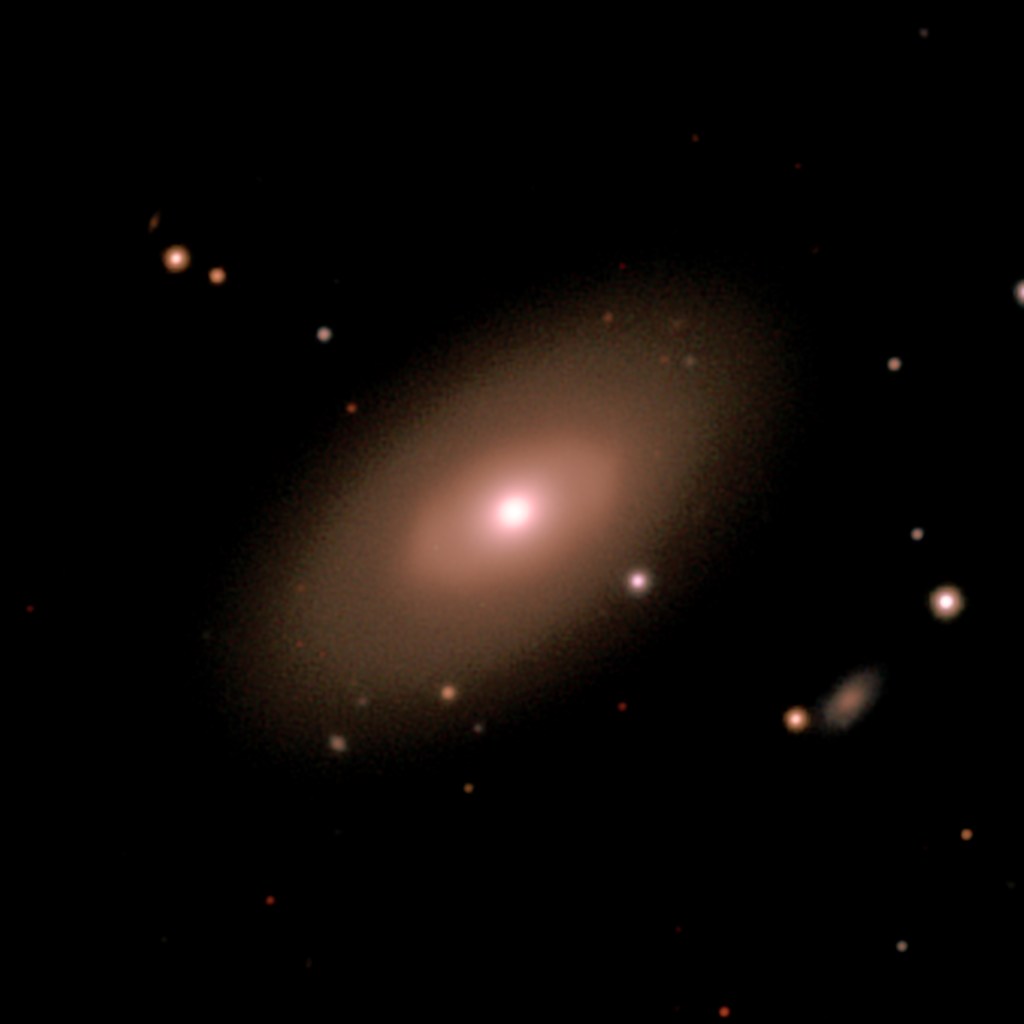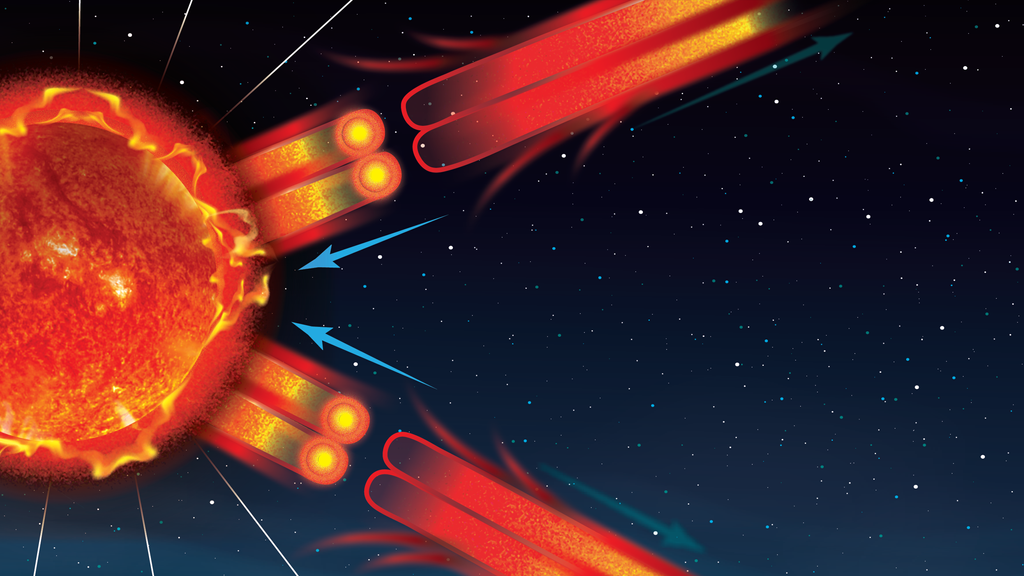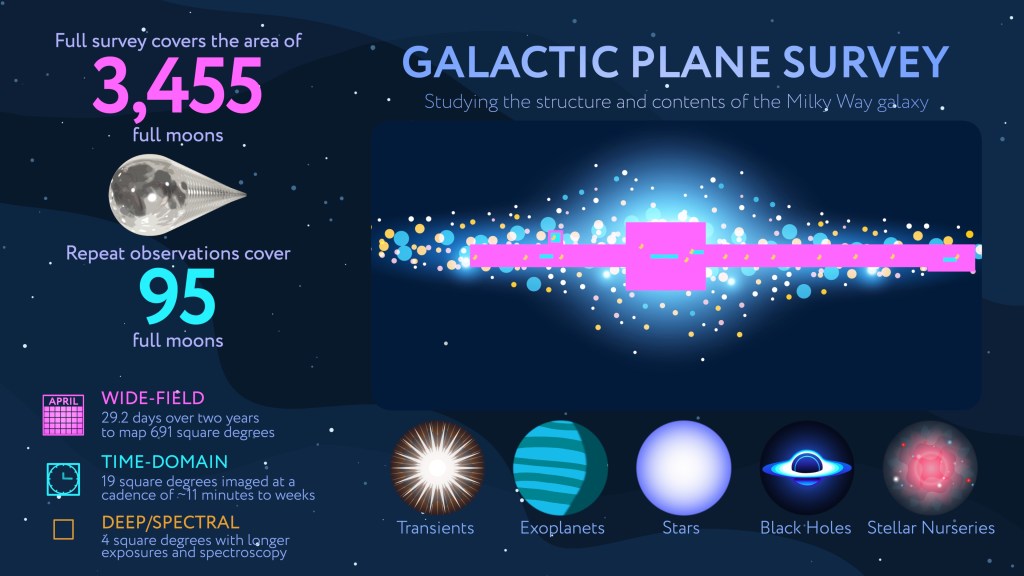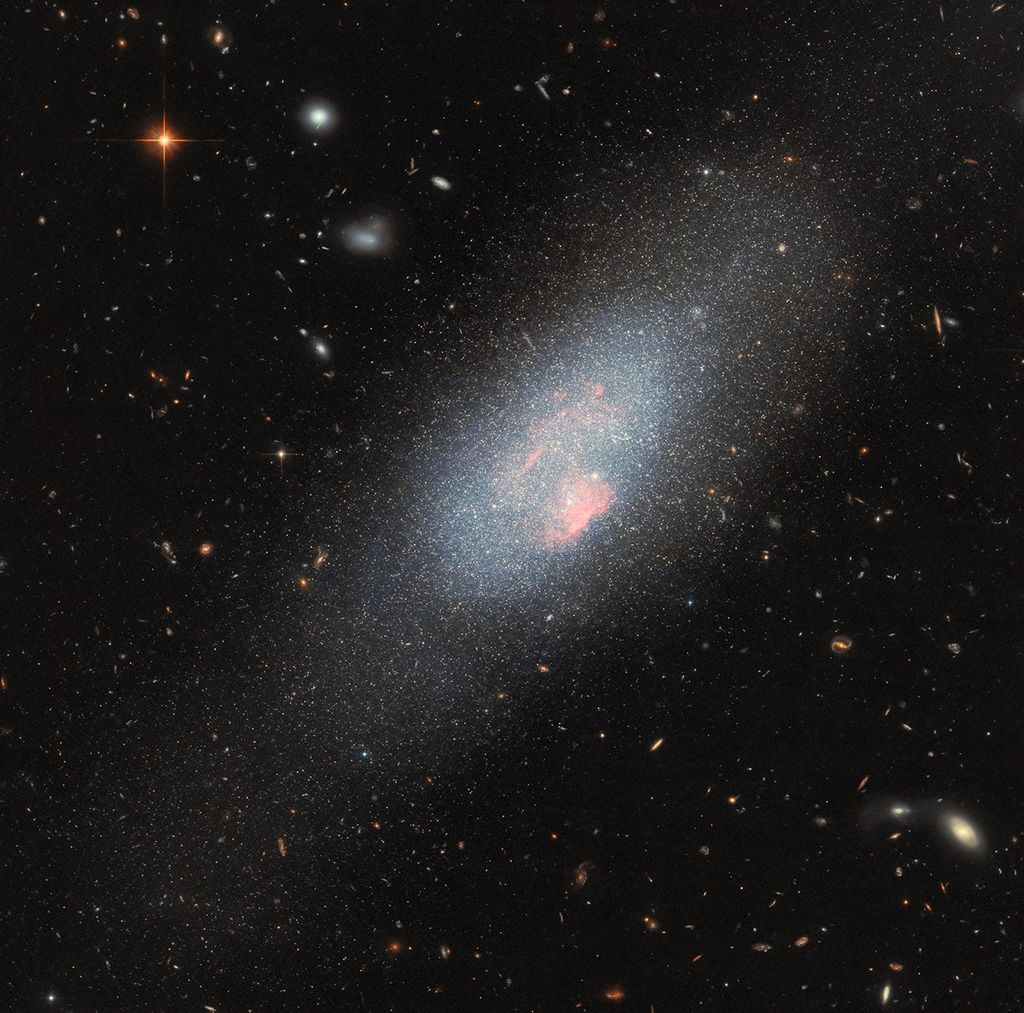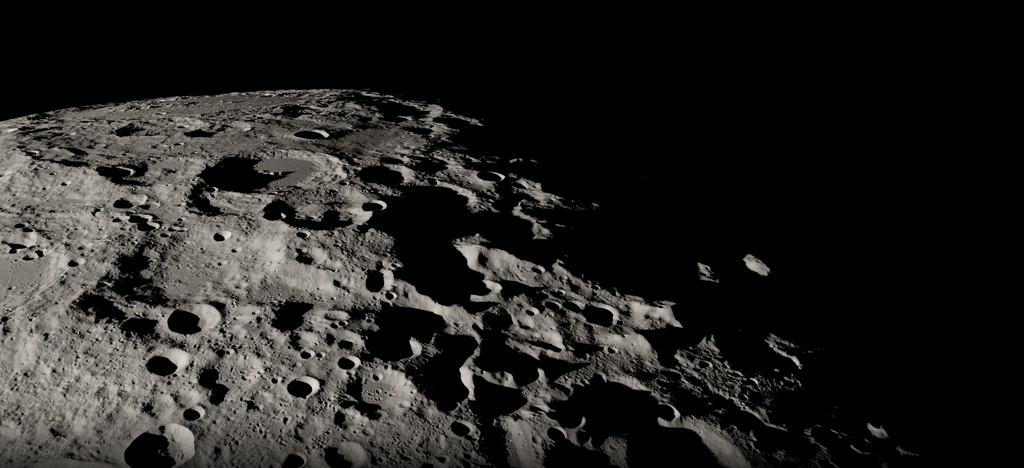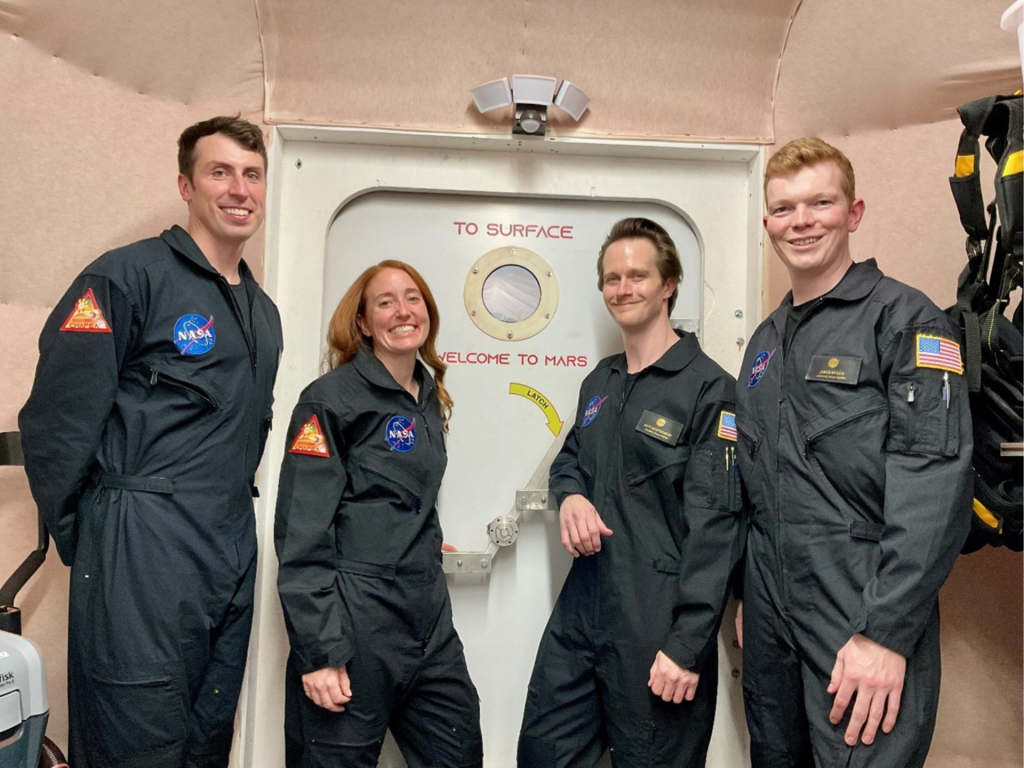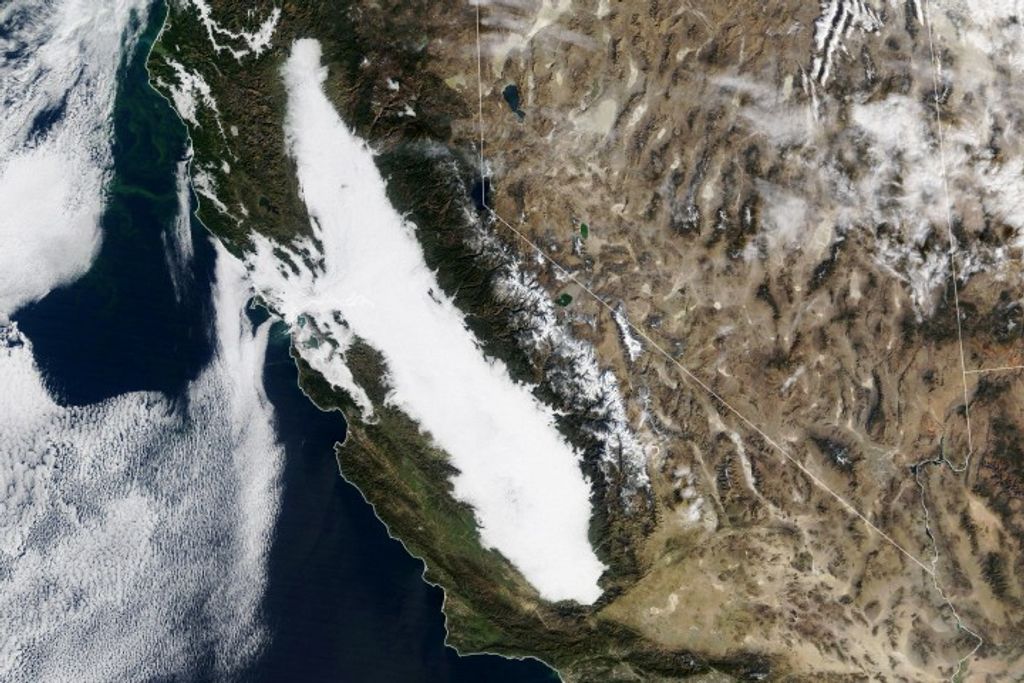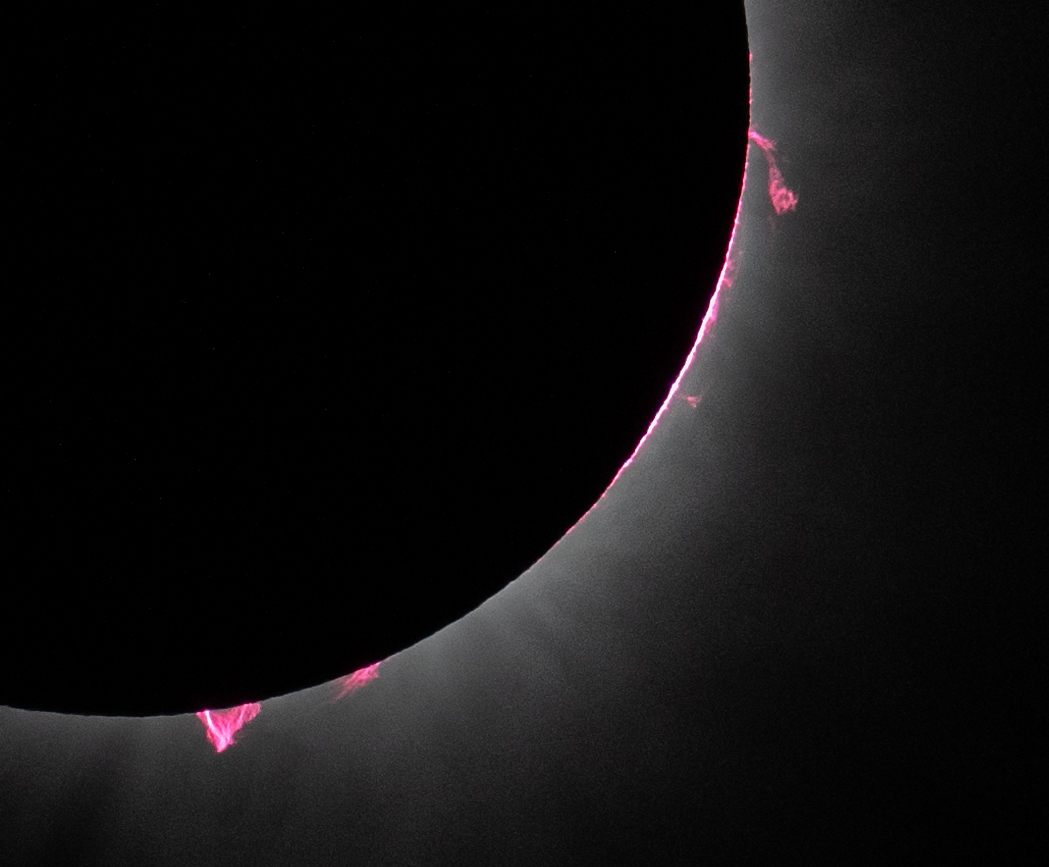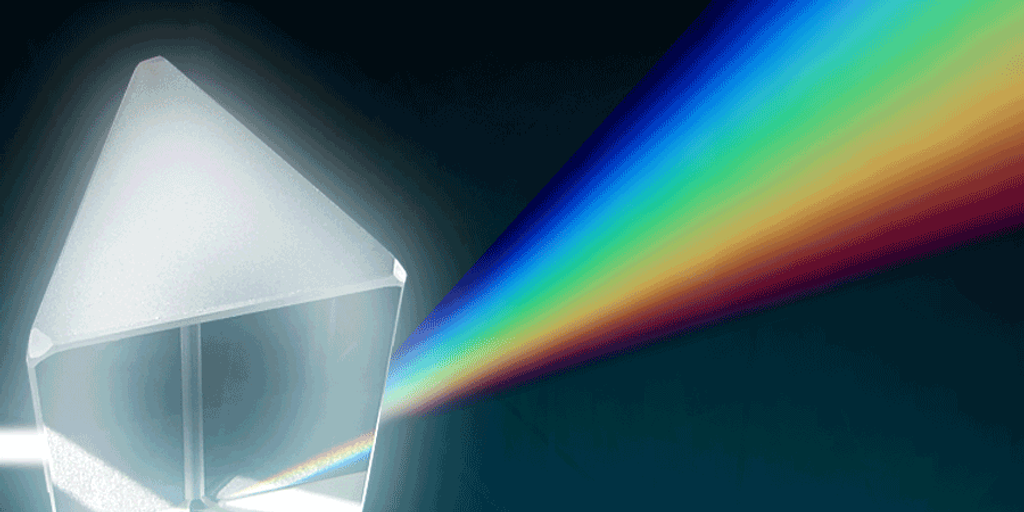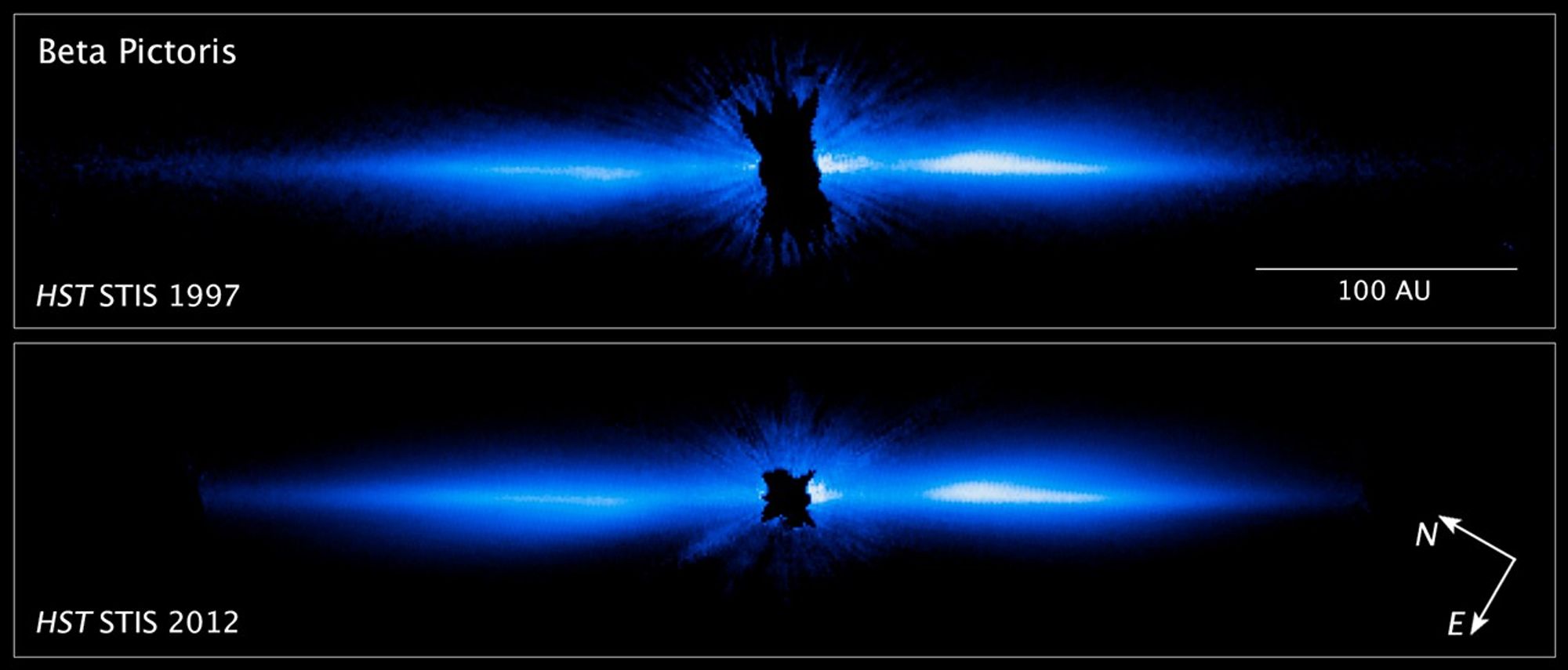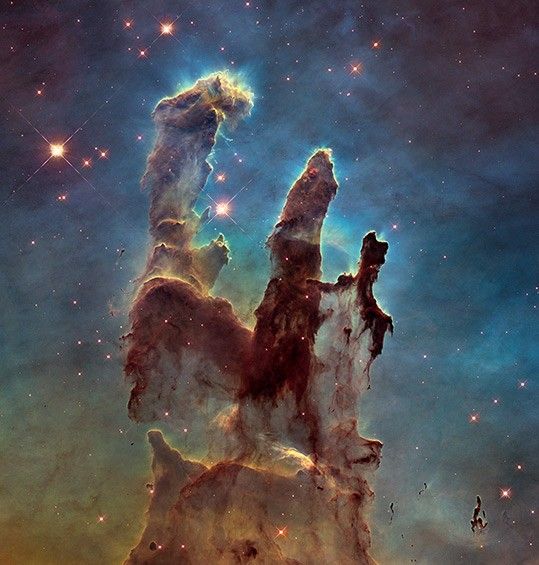1 min read
Hubble and ALMA View of Beta Pictoris

This is a color composite image of the large, edge-on, gas-and-dust disk encircling the 20-million-year-old star Beta Pictoris. The image shows a curious asymmetry in the dust and gas distribution. This may be due to a planetary collision within the disk, which may have pulverized the bodies. The new Hubble Space Telescope Imaging Spectrograph visible-light image (shown in blue) traces the disk in closer to the star to within about 650 million miles of the star (which is inside Saturn's orbit about the Sun). Radio data from the Atacama Large Millimeter/submillimeter Array (ALMA) shows the dust (1.3 millimeter is colored green) and carbon monoxide gas (colored red).
About the Object
- R.A. PositionR.A. PositionRight ascension – analogous to longitude – is one component of an object's position.05h 47m 17.08s
- Dec. PositionDec. PositionDeclination – analogous to latitude – is one component of an object's position.-51° 3' 59.43"
- ConstellationConstellationOne of 88 recognized regions of the celestial sphere in which the object appears.Pictor
- DistanceDistanceThe physical distance from Earth to the astronomical object. Distances within our solar system are usually measured in Astronomical Units (AU). Distances between stars are usually measured in light-years. Interstellar distances can also be measured in parsecs.63 light-years (19 parsecs)
About the Data
- Data DescriptionData DescriptionProposal: A description of the observations, their scientific justification, and the links to the data available in the science archive.
Science Team: The astronomers who planned the observations and analyzed the data. "PI" refers to the Principal Investigator.The image was created from Hubble data from the following proposals: 7125 PI: S. Heap (Eureka Scientific and NASA/GSFC) and 12551 PI: D. Apai (University of Arizona). The science team includes: D. Apai and G. Schneider (University of Arizona), C. Grady (Eureka Scientific and NASA/GSFC), M. Wyatt (University of Cambridge), A.-M. Lagrange (CNRS, Grenoble, France), M. Kuchner and C. Stark (NASA/GSFC), and S. Lubow (STScI). - InstrumentInstrumentThe science instrument used to produce the data.HST>STIS
- Object NameObject NameA name or catalog number that astronomers use to identify an astronomical object.Beta Pictoris
- Object DescriptionObject DescriptionThe type of astronomical object.Star with Circumstellar Disk
- Release DateFebruary 19, 2015
- Science ReleaseHubble Gets Best View of a Circumstellar Debris Disk Distorted by a Planet
- Credit
Related Images & Videos
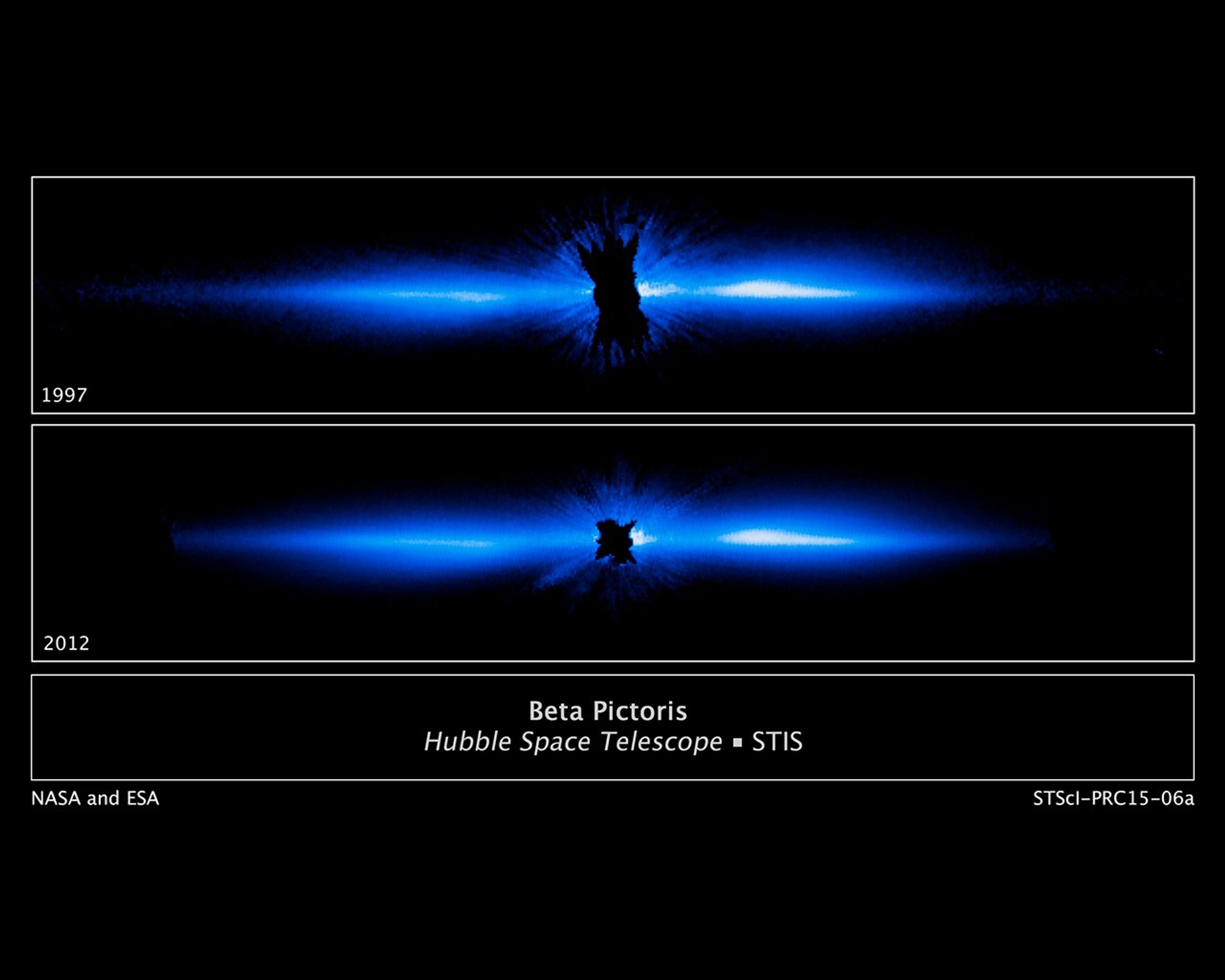
Hubble Views of Beta Pictoris (1997 and 2012)
The photo at the bottom is the most detailed picture to date of a large, edge-on, gas-and-dust disk encircling the 20-million-year-old star Beta Pictoris. The new visible-light Hubble image traces the disk in closer to the star to within about 650 million miles of the star...
Share
Details
Last Updated
Aug 17, 2025
Contact
Media
Claire Andreoli
NASA’s Goddard Space Flight Center
Greenbelt, Maryland
claire.andreoli@nasa.gov


